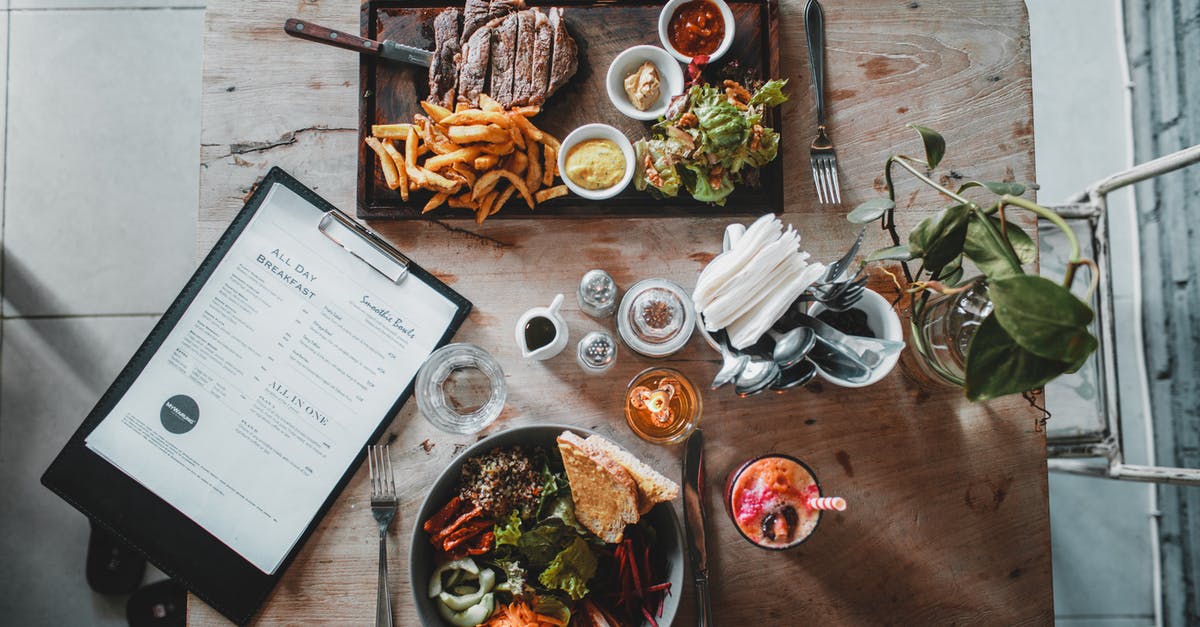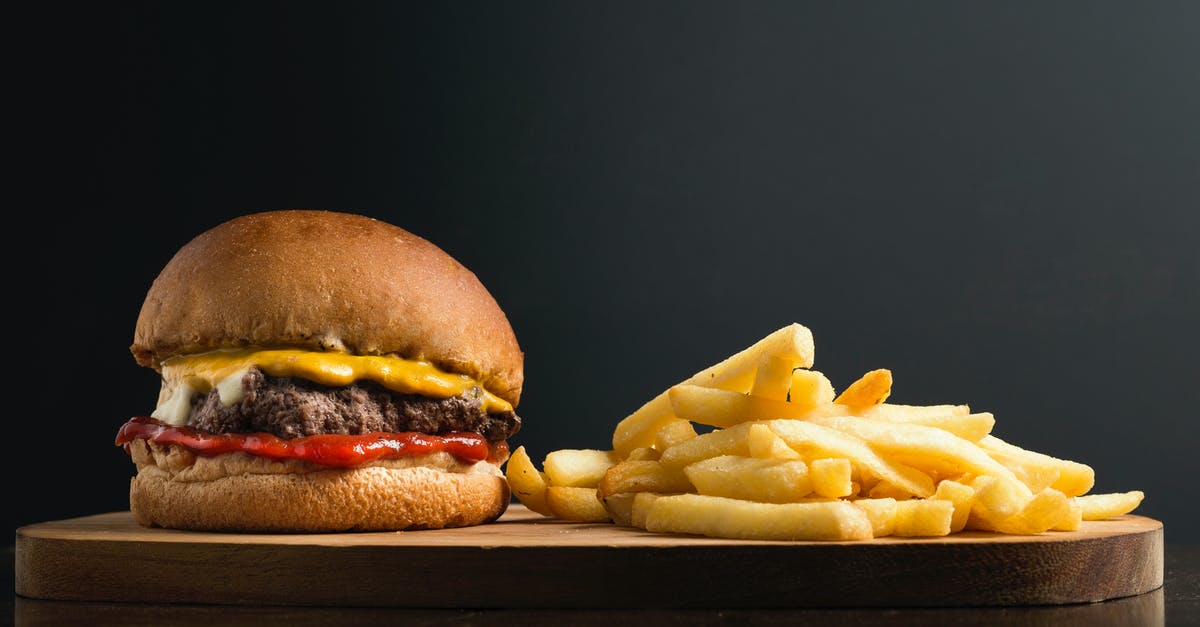What meats can I serve medium rare and why?

It is generally accepted that pork and chicken must be cooked completely (unless put through a strong curing process) while certain cuts of beef and lamb can be served on the rare side. Why is this?
Are particular bacteria populations present in some animals but can't survive in others? What is the inherent differences between these animals that makes the difference when eating? How can I objectively decide if it is safe to eat something partially on the rare side that does not involve simply trusting the "common knowledge" of the more experienced.
(Don't get me wrong - I appreciate any and all advice that I get from anyone who is more experienced than I am in anything, but I'd like to know how they came to their conclusions).
Best Answer
Beef (and Lamb): The surface of beef is often contaminated with pathogens such as e-coli. However, the meat is very dense and the bacteria cannot migrate from the surface into the flesh. Therefore, beef is safe to consume once the external temperature exceeds, 160 degrees F. The internal uncontaminated meat is safe to eat raw.
Pork: Like beef the surface of pork needs to be fully cooked. Unlike beef, pigs harbor a parasitic roundworm called Trichinella spiralis. Infection with the worm is called trichinosis and can be fatal. This worm is killed when the flesh reaches 150 degrees F and is held there for several minutes. Therefore pork is safe to consume when cooked to medium. (Commercial pork in North America almost never has the roundworm present. Almost every case (all?) of trichinosis in the last 15-20 years have come from undercooked wild boar or bear meat). Trichinella spiralis can also be killed by freezing (time and temperature dependent).
Chicken: Almost all chickens have Salmonella or Campylobacter present on the surface (at least). However, chickens have a less dense flesh than pigs, sheep or cows. Therefore, the bacteria can migrate deep into the flesh. Also, the processing of chickens is much more invasive than the previously mentioned animals which also means the interior meat can get contaminated. This means the meat must be cooked to well done throughout.
Duck: With duck it seems to come down to a matter of processing verses chicken. Also, they are raised in a much less confined manor, which helps prevent the spread of pathogens. There is still a chance of getting a salmonella infection from undercooked duck but cooking the breast well done basically ruins it, so people take the (small) risk.
Ground meat: Grinding meat, by its nature, implies the surface and the interior is mixed. Therefore, one must assume the meat is fully contaminated and must be entirely cooked to well done.
Pictures about "What meats can I serve medium rare and why?"



Why can we eat meat medium-rare?
"Allowing the meat to stand off the heat for a few minutes before serving allows those juices to redistribute throughout the meat and be reabsorbed into the more well-done outer surfaces." As a result, the meat will lose less juice when you cut into it, and it will be more tender to eat.Can all meat be eaten medium-rare?
If the fresh meat is a steak, roast or chop, then yes \u2014 medium-rare can be safe. That means the meat needs to reach 145\xb0F internally and stand for three or more minutes before cutting or consuming. Unfortunately, even if preferred by foodies, there's no way to guarantee the safety of rare meat.Why you should order medium-rare?
We've all heard how to order steak: medium-rare, which translates to an internal temperature of 135\xb0F. Most chefs recommend this temperature, as it brings out the flavor while ensuring that the cut stays tender, and also allows a little more time for a nice char on the outside.What should medium-rare be cooked to?
A medium-rare steak has a warm, red center that oozes with juicy, beef-forward flavor. You've officially reached medium-rare when you hit 130\xb0 to 135\xb0F, a temperature at which the proteins within the meat start to denature but can't fully finish. The result is a steak with the perfect amount of tender chewiness.What meats can I serve medium rare and why?
More answers regarding what meats can I serve medium rare and why?
Answer 2
Chicken meat and eggs carry the risk of salmonella. Salmonella are bacteria which cause severe symptoms, and can even end in death, unlike other, milder types of food poisoning. They are also hardy bacteria, and the temperature needed for them to die quickly is above the temperature for medium rare. In theory, you could eat poultry medium rare if you ensure that it has stayed at the lower temperature for a sufficiently long time, but the relationship is not linear, and if you are not well acquainted with the times needed and don't use a thermometer consequently, it is safer to heat it to well done.
Pork is known as a possible source of trichinosis, which is caused by a parasite. It also needs very high temperatures to die. Systematic veterinary control has almost eradicated trichinosis in developed countries for commercial pork, so eating pork at medium rare is considered reasonably safe today. Care should still be taken if you are preparing wild boar as a significant risk of trichinosis remains in game hogs. (Small slaughter houses and butcher shops may offer pork from wild boars in (following) hunting season.)
Other meats have their own share of nasties, especially E.coli - they are usually just unpleasant, but some strains can be very dangerous, like the one in Germany last summer. Be warned that with modern safety procedures, you are more likely to get your food poisoning from produce (because it is often not heated, but eaten as salads, etc.) than from meat. So don't forget to wash your veggies.
Answer 3
You can serve almost any protein medium rare. I wouldn't want to eat poultry at that temperature, mind you.
Cooking the protein to high temperature is not the only way to cook it safely. The high temperature kills almost all of the bacteria in seconds. But a lower temperature for a longer period of time does just as well.
For instance, this chart lists how long it takes to pasteurize (kill the bacteria and other organisms) some common protein.
From http://www.douglasbaldwin.com/sous-vide.html#Table_5.1 -
Pasteurization Time for Meat (Beef, Pork, and Lamb)
(starting at 41°F / 5°C and put in a 131–151°F / 55–66°C water bath)
55°C 56°C 57°C 58°C 59°C 60°C
Thickness 131°F 133°F 134.5°F 136.5°F 138°F 140°F
5 mm 2 hr 1¼ hr 60 min 45 min 40 min 30 min
10 mm 2 hr 1½ hr 1¼ hr 55 min 45 min 40 min
15 mm 2¼ hr 1¾ hr 1½ hr 1¼ hr 60 min 55 min
20 mm 2½ hr 2 hr 1¾ hr 1½ hr 1¼ hr 1¼ hr
25 mm 2¾ hr 2¼ hr 2 hr 1¾ hr 1½ hr 1½ hr
30 mm 3 hr 2½ hr 2 hr 2 hr 1¾ hr 1½ hr
35 mm 3¼ hr 2¾ hr 2¼ hr 2 hr 2 hr 1¾ hr
40 mm 3½ hr 3 hr 2½ hr 2¼ hr 2¼ hr 2 hr
45 mm 4 hr 3¼ hr 3 hr 2¾ hr 2½ hr 2¼ hr
50 mm 4½ hr 3¾ hr 3¼ hr 3 hr 2¾ hr 2½ hr
55 mm 5 hr 4¼ hr 3¾ hr 3½ hr 3 hr 3 hr
60 mm 5¼ hr 4¾ hr 4¼ hr 3¾ hr 3½ hr 3¼ hr
65 mm 6 hr 5¼ hr 4¾ hr 4¼ hr 4 hr 3¾ hr
70 mm 6½ hr 5¾ hr 5¼ hr 4¾ hr 4¼ hr 4 hr
61°C 62°C 63°C 64°C 65°C 66°C
Thickness 142°F 143.5°F 145.5°F 147°F 149°F 151°F
5 mm 25 min 25 min 18 min 16 min 14 min 13 min
10 mm 35 min 30 min 30 min 25 min 25 min 25 min
15 mm 50 min 45 min 40 min 40 min 35 min 35 min
20 mm 60 min 55 min 55 min 50 min 45 min 45 min
25 mm 1¼ hr 1¼ hr 1¼ hr 60 min 55 min 55 min
30 mm 1½ hr 1½ hr 1¼ hr 1¼ hr 1¼ hr 1¼ hr
35 mm 1¾ hr 1½ hr 1½ hr 1½ hr 1¼ hr 1¼ hr
40 mm 1¾ hr 1¾ hr 1¾ hr 1½ hr 1½ hr 1½ hr
45 mm 2¼ hr 2 hr 2 hr 1¾ hr 1¾ hr 1¾ hr
50 mm 2½ hr 2¼ hr 2¼ hr 2 hr 2 hr 2 hr
55 mm 2¾ hr 2¾ hr 2½ hr 2½ hr 2¼ hr 2¼ hr
60 mm 3 hr 3 hr 2¾ hr 2¾ hr 2½ hr 2½ hr
65 mm 3½ hr 3¼ hr 3¼ hr 3 hr 3 hr 2¾ hr
70 mm 3¾ hr 3¾ hr 3½ hr 3¼ hr 3¼ hr 3¼ hr
Table 5.1: Time required to reduce Listeria by at least a million to one, Salmonella by at least three million to one, and E. coli by at least a hundred thousand to one in thawed meat starting at 41°F (5°C). I calculated the D- and z-values using linear regression from O’Bryan et al. (2006), Bolton et al. (2000), and Hansen and Knøchel (1996): for E. coli I use D554.87 = 19.35 min; for Salmonella I use D557.58 = 13.18 min; and for Listeria I use D559.22 = 12.66 min. For my calculations I used a thermal diffusivity of 1.11×10-7 m2/s, a surface heat transfer coefficient of 95 W/m2-K, and took ?=0 up to 30 mm and ?=0.28 above 30 mm (to simulate the heating speed of a 2:3:5 box). For more information on calculating log reductions, see Appendix A. [Note that if the beef is seasoned using a sauce or marinate which will acidify the beef, then the pasteurizing times may need to be doubled to accommodate the increased thermal tolerance of Listeria (Hansen and Knøchel, 1996).]
There is more of this information available. Look for sous vide cooking times to see the appropriate cooking time for you choice of protein.
Answer 4
Traditionally pork and chicken have been more disease ridden, carriers of parasites, and have high surface bacteria counts. So thorough cooking has always been advised
If you know the source of the pork or chicken, you can cook it rare too. Some cultures will eat it raw
It all comes down to how much you know and trust your meat provider
There are also doggy beef and lamb suppliers out there, that you would be best to thoroughly cook beef and lamb from them too
Sources: Stack Exchange - This article follows the attribution requirements of Stack Exchange and is licensed under CC BY-SA 3.0.
Images: Rachel Claire, William Fortunato, ROMAN ODINTSOV, Daniel Reche
